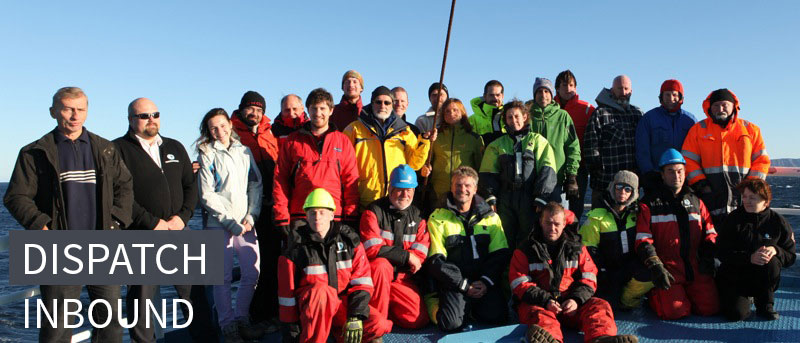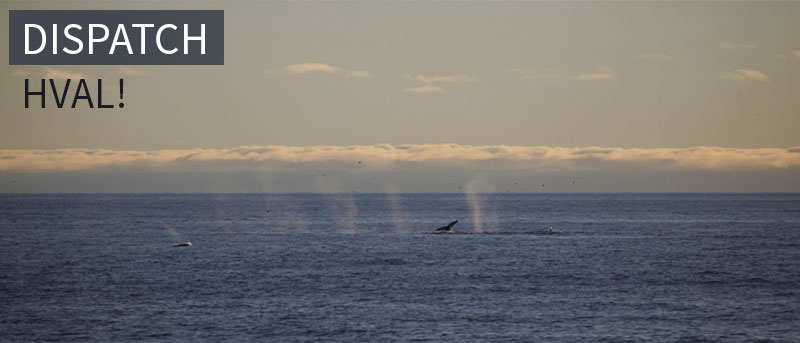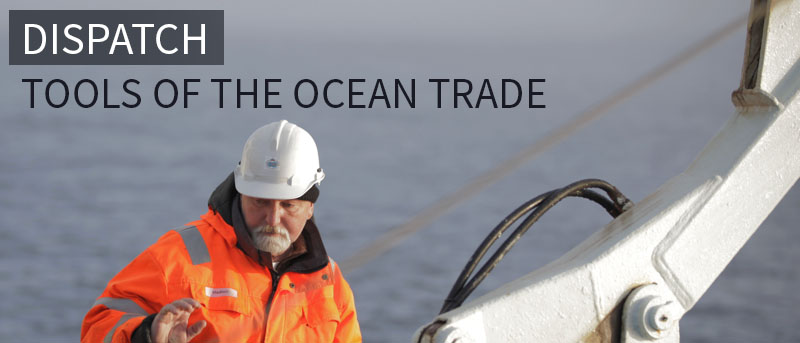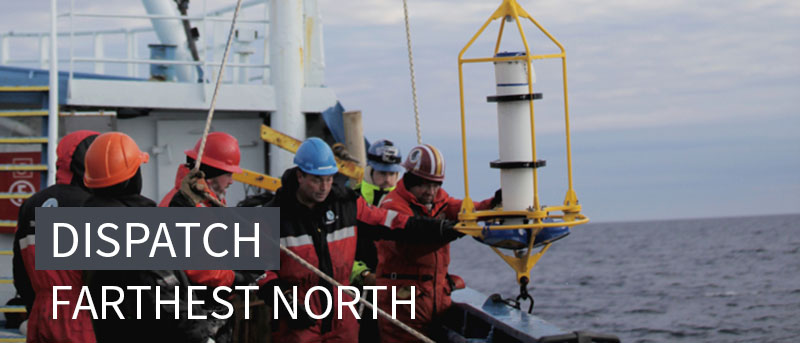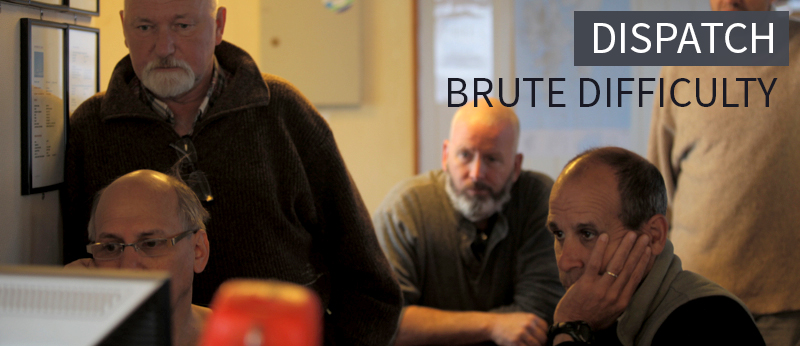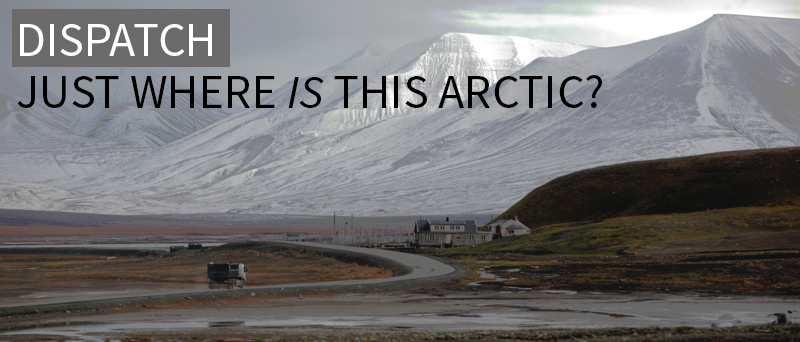UNDERWAY
September 15, 2013
Tweet
We met Lance at 0900 on Friday September 13th at her berth in Longyearbyen, found our cabins, stowed our personal gear, while in spitting rain and chill wind, the deck guys off loaded the equipment from the previous cruise and began to load ours. Long Norwegian vowels and much laughter—this seems a happy ship. (Most are; the unhappy, un-adaptable people tend to drift away into other lines of work.) We’re hoping to soon get underway so to see the magnificent west coast of Svalbard in daylight. No word yet as to when, and I don’t want to pester the real workers to ask.
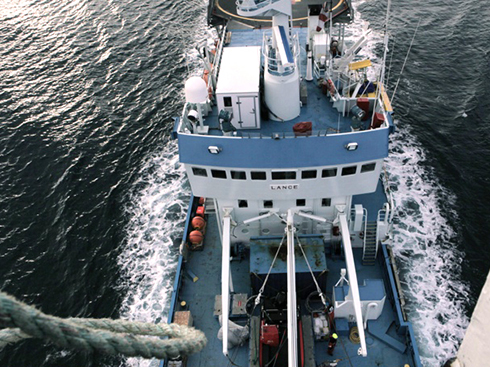 Svalbard is an archipelago, Spitsbergen being the largest island in the group. In the tourist brochures, it’s often referred to as Spitsbergen, but not generally by Norwegians whose possession it is. So in deference to them, Lance being a Norwegian research vessel, we’ll call this place Svalbard. There is sketchy evidence in the sagas that the Norse, who accidentally discovered and then settled Iceland around the year 870, also discovered Svalbard, which means “cold edge” in Norwegian.
Svalbard is an archipelago, Spitsbergen being the largest island in the group. In the tourist brochures, it’s often referred to as Spitsbergen, but not generally by Norwegians whose possession it is. So in deference to them, Lance being a Norwegian research vessel, we’ll call this place Svalbard. There is sketchy evidence in the sagas that the Norse, who accidentally discovered and then settled Iceland around the year 870, also discovered Svalbard, which means “cold edge” in Norwegian.
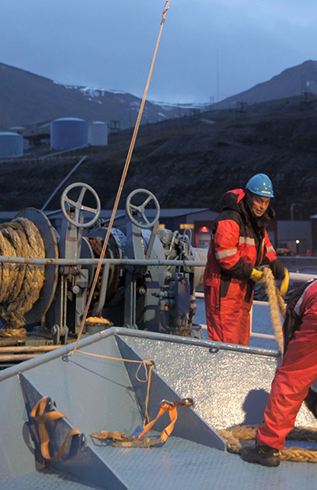 Most historians, however, contend that the cold edge was actually northeast Greenland; we’ll never know for sure. In any case, the Norse did not settle Svalbard, and there never was an indigenous population. We know nothing concrete about its discovery until the late 16th century, when the northern European nations were climbing over each other to reach the fabled riches of “Cathay” by a northwestern or northeastern passage through the Arctic.
In 1595, William Barents attempted for the second time to navigate the Northeast Passage, over the top of Russia. En route east, the two-ship expedition happened upon an island with a chain of pointed mountain crests—“spitsbergen” in Dutch means pointed mountain. Pressing on eastward, they were stopped by ice near Nova Zemlya and forced to over-winter in abject misery from the cold and from scurvy.
Most historians, however, contend that the cold edge was actually northeast Greenland; we’ll never know for sure. In any case, the Norse did not settle Svalbard, and there never was an indigenous population. We know nothing concrete about its discovery until the late 16th century, when the northern European nations were climbing over each other to reach the fabled riches of “Cathay” by a northwestern or northeastern passage through the Arctic.
In 1595, William Barents attempted for the second time to navigate the Northeast Passage, over the top of Russia. En route east, the two-ship expedition happened upon an island with a chain of pointed mountain crests—“spitsbergen” in Dutch means pointed mountain. Pressing on eastward, they were stopped by ice near Nova Zemlya and forced to over-winter in abject misery from the cold and from scurvy.
"That this place, so powerful in appearance, so timeless, distant, and immutable, remains sorely vulnerable to the works of man seems unthinkable."
Their teeth falling out of their heads, Barents and several others died of scurvy. Sometimes in the history of exploration, the unsuccessful expedition gains more fame than the successful (Shackelton’s Antarctic failure, for prime example). Back in Europe, the survivors’ frightful story grew into legend. Shakespeare was clearly familiar with it. In Twelfth Night, he has Olivia’s servant tell Sir Toby Belch that, “…you are now sailed into the north of my lady’s opinion, where you will hang like an icicle on a Dutchman’s beard.” When Dutch expeditions, having reached the Spice Islands via the much longer but reliable Cape of Good Hope route, began returning with riches beyond dreams, the Dutch forgot about this deadly Northeast Passage and, for a while, about Spitsbergen.
Lance was not ready to sail until 2100, under a melancholy night sky; in the Arctic clouds, between white and black, there are far more shades of grey than adjectives to describe them. But fortunately for those of us in the new science party yet lacking sea legs, her northerly course put the southeast wind on the stern. It would have been a harsh first night had conditions been reversed. I’ve never discussed it with anyone, perhaps it’s only me projecting or thinking darkly about the pollutants and effluviums we’re sending northward on the winds and currents, but there seems an inherent melancholy in the Arctic sky, ocean, and landscape. Tonight, steaming past 78° North, I’m feeling it keenly. What we don't know so well is the behavior of smaller arcs within the global system and how changes in them ricochet within the larger system—of those in the Arctic, we are particularly ignorant. So our specific objective is to measure the quantity of tropical-origin Atlantic water flowing northward through the Fram Strait into the Arctic Ocean in order to better understand its fate.
That this place, so powerful in appearance, so timeless, distant, and immutable, remains sorely vulnerable to the works of man seems unthinkable. Yet we know that it’s true; we know that humans with our numbers and our technology have become in our own right a geophysical force quite capable of altering the face and form of the Arctic. But perhaps with that same power in hand, we will decide to do no further damage to this place, to leave it to the ages. Maybe we will. I don’t know, but I hope.
-Dallas Murphy


